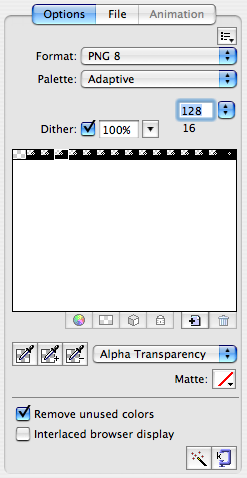

Motion picture support: read and write the common image formats used in digital film work.Morphology of shapes: extract features, describe shapes and recognize patterns in images.Generalized pixel distortion: correct for, or induce image distortions including perspective.Montage: juxtapose image thumbnails on an image canvas.Composite: overlap one image over another.Image identification: describe the format and attributes of an image.Text & comments: insert descriptive or artistic text in an image.Animation: create a GIF animation sequence from a group of images.Special effects: blur, sharpen, threshold, or tint an image.Decorate: add a border or frame to an image.Transparency: render portions of an image invisible.Transform: resize, rotate, crop, flip or trim an image.Format conversion: convert an image from one format to another (e.g.Before each ImageMagick release, we perform a comprehensive security assessment that includes memory and thread error detection to prevent security vulnerabilities. The ImageMagick development process ensures a stable API and ABI. It is distributed under the Apache 2.0 license, approved by the OSI and recommended for use by the OSSCC.
#IMAGEMAGICK CONVERT SOFTWARE#
ImageMagick is free software delivered as a ready-to-run binary distribution or as source code that you may freely use, copy, modify, and distribute in both open and proprietary applications. With a language interface, use ImageMagick to modify or create images dynamically and automagically. Choose from these interfaces: G2F (Ada), MagickCore (C), MagickWand (C), ChMagick (Ch), ImageMagickObject (COM+), Magick++ (C++), JMagick (Java), L-Magick (Lisp), NMagick (Neko/haXe), MagickNet (.NET), PascalMagick (Pascal), PerlMagick (Perl), MagickWand for PHP (PHP), IMagick (PHP), PythonMagick (Python), RMagick (Ruby), or TclMagick (Tcl/TK). The functionality of ImageMagick is typically utilized from the command line or you can use the features from programs written in your favorite language. ImageMagick can resize, flip, mirror, rotate, distort, shear and transform images, adjust image colors, apply various special effects, or draw text, lines, polygons, ellipses and Bézier curves. It can read and write images in a variety of formats (over 200) including PNG, JPEG, GIF, WebP, HEIC, SVG, PDF, DPX, EXR and TIFF. $info = ::Format( "", $count, $partial, $srcname, $destname, $srcitem.Length, $destitem.ImageMagick creates, edit, compose, or convert digital images. #the following line defines the contents of the convert command line New-Item $destpath -type directory | Out-Null
$destpath = ::GetDirectoryName( $destname ) $destname= ::ChangeExtension( $destname, $dest_ext ) #The following lines allow the display of all files that are being processedįoreach ($srcitem in $(Get-ChildItem $srcfolder -include $src_filter -recurse)) $fp = New-Item -ItemType file $logfile -force $options = "-colorspace rgb -density 300 -depth 8 -alpha off"

#set the destination (output) image format #set the source image format (wildcard must be specified) #set the destination folder for the images #This script will display the filename of every file processed #This script will execute a command recursively on all folders and subfolders #ImageMagick Recursive Powershell Script with Progress display This script also includes a progress display. I created the following script from various online resources to convert files when I had many images in many subdirectories to process.


 0 kommentar(er)
0 kommentar(er)
